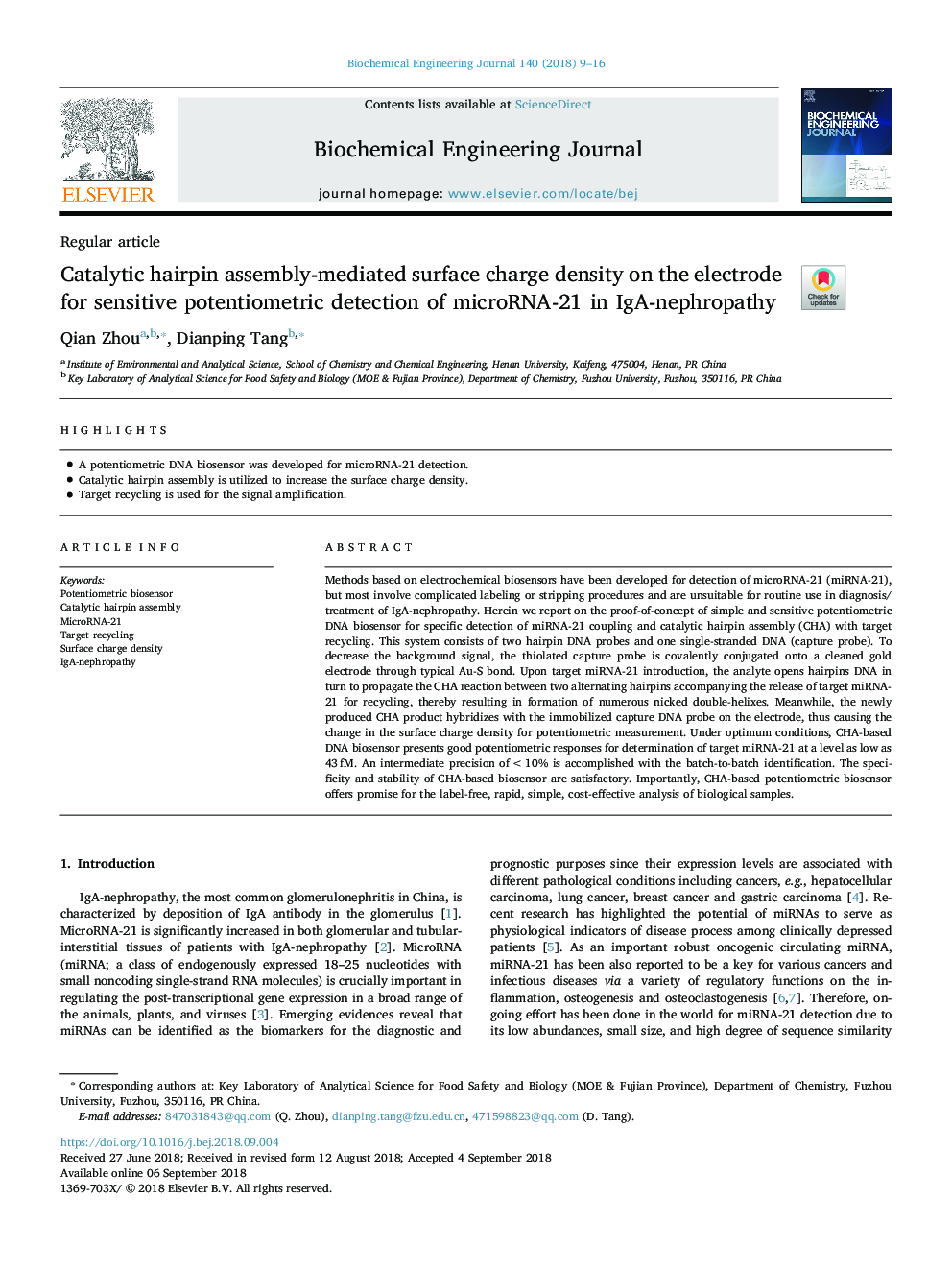| Article ID | Journal | Published Year | Pages | File Type |
|---|---|---|---|---|
| 10149893 | Biochemical Engineering Journal | 2018 | 8 Pages |
Abstract
Methods based on electrochemical biosensors have been developed for detection of microRNA-21 (miRNA-21), but most involve complicated labeling or stripping procedures and are unsuitable for routine use in diagnosis/treatment of IgA-nephropathy. Herein we report on the proof-of-concept of simple and sensitive potentiometric DNA biosensor for specific detection of miRNA-21 coupling and catalytic hairpin assembly (CHA) with target recycling. This system consists of two hairpin DNA probes and one single-stranded DNA (capture probe). To decrease the background signal, the thiolated capture probe is covalently conjugated onto a cleaned gold electrode through typical Au-S bond. Upon target miRNA-21 introduction, the analyte opens hairpins DNA in turn to propagate the CHA reaction between two alternating hairpins accompanying the release of target miRNA-21 for recycling, thereby resulting in formation of numerous nicked double-helixes. Meanwhile, the newly produced CHA product hybridizes with the immobilized capture DNA probe on the electrode, thus causing the change in the surface charge density for potentiometric measurement. Under optimum conditions, CHA-based DNA biosensor presents good potentiometric responses for determination of target miRNA-21 at a level as low as 43âfM. An intermediate precision of <10% is accomplished with the batch-to-batch identification. The specificity and stability of CHA-based biosensor are satisfactory. Importantly, CHA-based potentiometric biosensor offers promise for the label-free, rapid, simple, cost-effective analysis of biological samples.
Keywords
Related Topics
Physical Sciences and Engineering
Chemical Engineering
Bioengineering
Authors
Qian Zhou, Dianping Tang,
